The most popular next-generation solar cells under development may have a problem – the top layer is full of tiny pinholes, researchers at the Okinawa Institute of Science and Technology Graduate University in Japan have found.
The majority of high-performance solar cells under development use a combination of materials including perovskite and spiro-MeOTAD. These cells are far cheaper than traditional silicon-based solar cells, and their efficiency has been increasing significantly in the past few years. But perovskite, which is the layer that converts sunlight to electricity, degrades quickly.
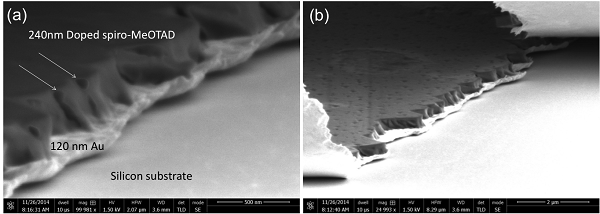 A high magnification image shows a cross section of doped spiro-MeOTAD and the problematic pinholes (pictured on right) forming channels (pictured on left), which allow water and other molecules to easily diffuse through the solar cell. Image credit: OIST
A high magnification image shows a cross section of doped spiro-MeOTAD and the problematic pinholes (pictured on right) forming channels (pictured on left), which allow water and other molecules to easily diffuse through the solar cell. Image credit: OIST
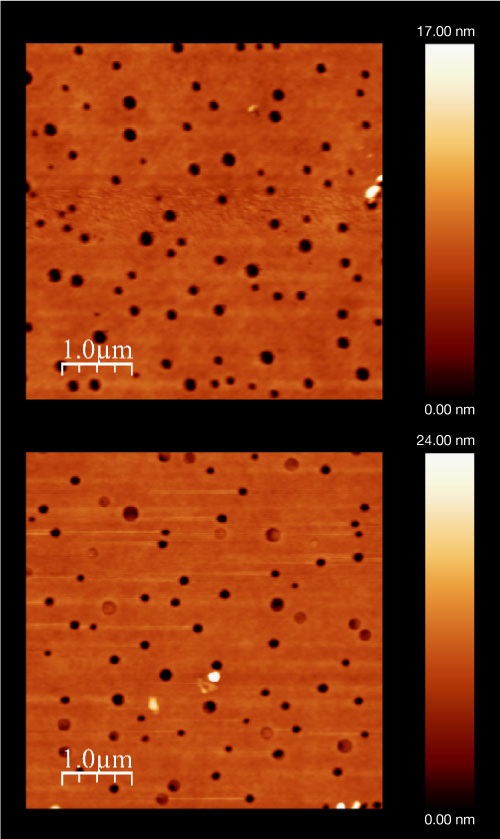 Atomic Force Microscopy (AFM) images show pinholes in the spiro-MeOTAD when it is first prepared (top) and after air exposure for 24 hours (bottom). The average diameter of the pinholes is about 135 nanometers, with some as large as two microns. Image credit: OIST
Atomic Force Microscopy (AFM) images show pinholes in the spiro-MeOTAD when it is first prepared (top) and after air exposure for 24 hours (bottom). The average diameter of the pinholes is about 135 nanometers, with some as large as two microns. Image credit: OIST
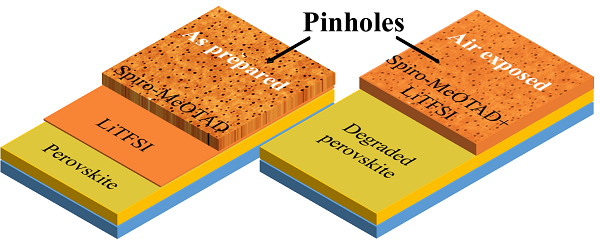 Most high-performance solar cells under development layer spiro-MeOTAD on top of perovskite, with other trace elements added to increase electrical conductivity. Pinholes in the top layer enable water and other molecules in air to diffuse through the thin film and degrade the perovskite, reducing its lifespan. Image credit: OIST
Most high-performance solar cells under development layer spiro-MeOTAD on top of perovskite, with other trace elements added to increase electrical conductivity. Pinholes in the top layer enable water and other molecules in air to diffuse through the thin film and degrade the perovskite, reducing its lifespan. Image credit: OIST
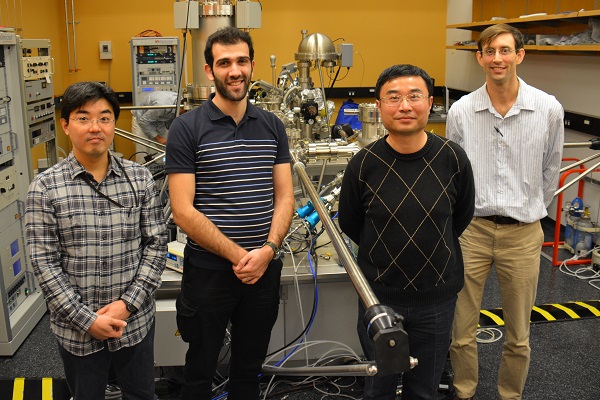 (From left) Dr. Luis Ono, OIST PhD student Zafer Hawash, Professor Yabing Qi and Dr. Michael Lee aim to improve the efficiency and lifetime of perovskite solar cells. Image credit: OIST
(From left) Dr. Luis Ono, OIST PhD student Zafer Hawash, Professor Yabing Qi and Dr. Michael Lee aim to improve the efficiency and lifetime of perovskite solar cells. Image credit: OIST
OIST researchers believe they have identified a key culprit for this problem.
Miniscule pinholes in the spiro-MeOTAD layer — most so small they cannot be seen even with a light microscope — may be creating easy pathways for water and other gas molecules in air to diffuse through the thin film and degrade the perovskite.
“These pinholes may play a major role in the degradation of the lifetime of the solar cells,” said Zafer Hawash, a PhD student at OIST who discovered the pinholes. His findings were recently published in the journal Chemistry of Materials.
Hawash noticed the pinholes while analyzing how air interacts with spiro-MeOTAD. At first he didn’t think they were important, but when he started looking into it, he found no mention of them in the scientific literature.
“No one has really mentioned this,” said Hawash, who works in OIST’s Energy Materials and Surface Sciences Unit and is the lead paper author. “I started realizing it was something important to report, to let people know these pinholes exist and that we should get rid of them to get better lifetime.”
The pinholes appear to be related to how the spiro-MeOTAD layer is usually made – a solution is spin-coated onto a base layer to create a thin film a tiny fraction of the thickness of a human hair. Another preparation method, vacuum evaporation, does not produce the pinholes, but is less convenient to use, explained Dr. Luis Ono, an Energy Materials and Surface Sciences Unit group leader and paper co-author.
The OIST team is looking into how they can eliminate the pinholes while still keeping the cost low, perhaps by tweaking preparation process or adding other ingredients.
“Currently we are making efforts in finding a way to fix the problem of the pinholes,” said Professor Yabing Qi, who heads the Energy Materials and Surface Sciences Unit.
This latest finding builds on the Qi’s lab ongoing work to overcome the instabilities in perovskite solar cells and develop low-cost solar power.
References:
Publication: Zafer Hawash, Luis K. Ono, Sonia R. Raga, Michael V. Lee, Yabing Qi. Air-Exposure Induced Dopant Redistribution and Energy Level Shifts in Spin-Coated Spiro-MeOTAD Films. Chemistry of Materials, 2015
Story Source: Pinholes are Pitfalls for High Performance Solar Cells, Okinawa Institute of Science and Technology – OIST — January 30, 2015










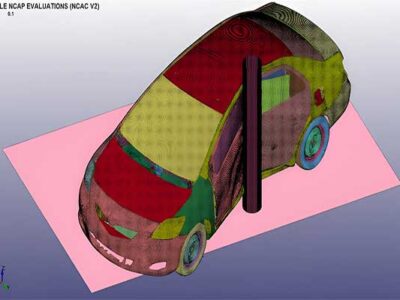





Comments